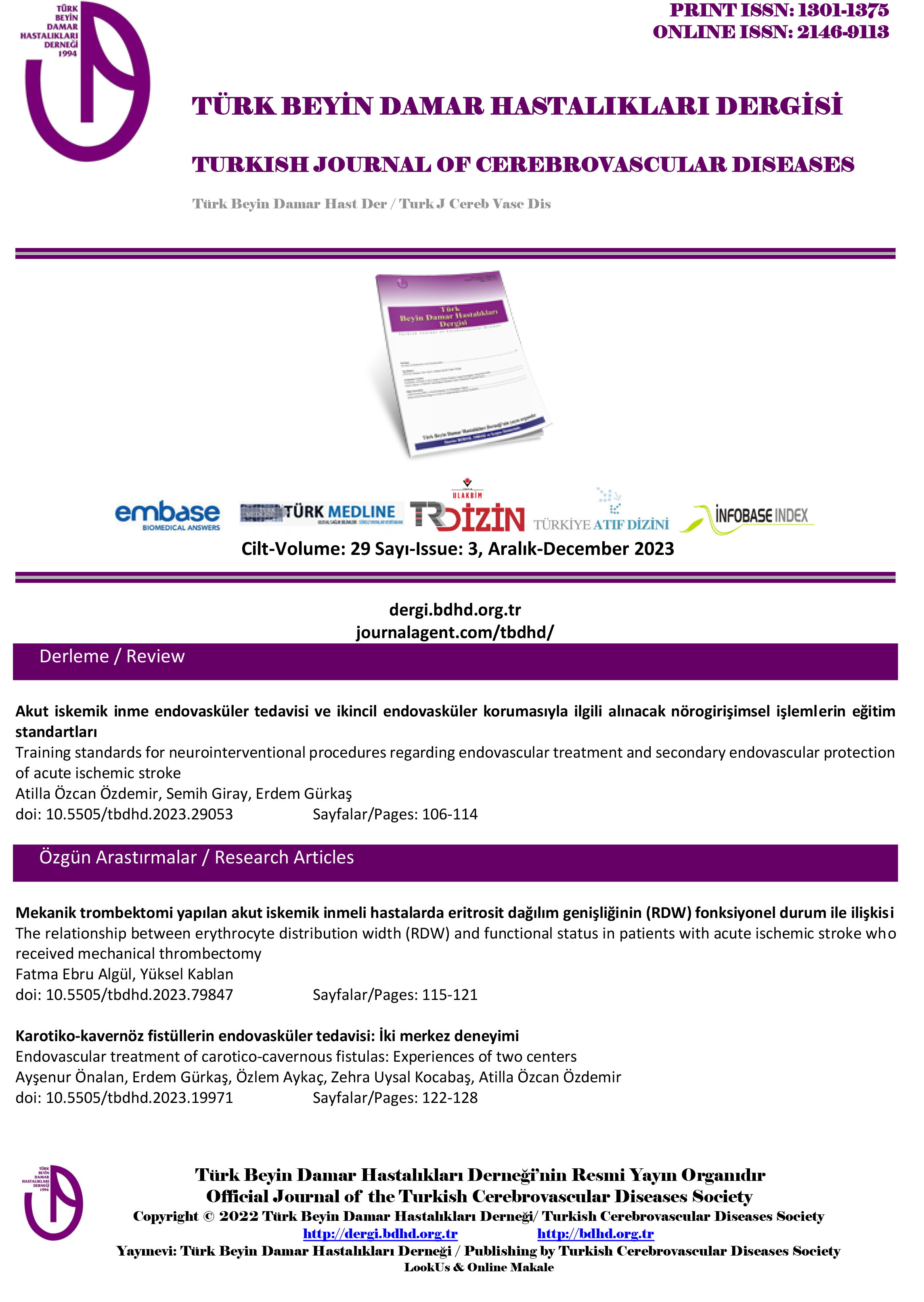LONG-TERM TRANSCRANIAL DOPPLER SONOGRAPHY AND MAGNETIC RESONANCE IMAGING FOR EV ALUA TION OF SILENT CEREBRAL EMBOLISM IN CEREBROV ASCULAR ASYMPTOMA TIC PROBANDS
S. HORNER1, M. AUGUSTIN1, R. SCHMIDT1, F. FAZEKAS2, E. Ott2, K. NIEDERKORN212
und: Cerebral microembolism from the extracranial vascular system can be detected by transcranial Doppler sonography. The frequency of intracranial embolic signals correlatcs with the degree of extracranial atherosclerotic disease and presence of ischemic symptoms. Materials and Methods: in order to investigate the possible occurrence of embolic events in cerebrovascular asymptomatic persons with and without extracranial carotid artery disease we performed simultaneous bilateral transcranial Doppler sonography (TCD) monitoring of the middle cerebral arteries and magnetic resonance imaging (MRI) of the brain in 46 individuals (22 female, 24 male, mean age 61 ± 7 years). They were selected from a cohort of 500 randomly selected community dwelling volunteers without signs or symptoms of cerebrovascular disease. The investigated subjects consisted of ali (6/500, 1.2%) persons with > 50% carotid stenosis and 40/500 randomly selected cases with either minimal to moderate carotid plaques (< 40% stenosis) or normal exams. TCD monitoring was repeated in 5/6 probands with severe atherosclcrotic disease 26 - 41 weeks (mean 37 ± 5.5 weeks) after the first examination. TCD monitoring time was 45 - 60 minutes. Results: MRI showed various lesions in 22/46 (47.8%) subjects. Microangiopathy-related cerebral damage (MARCD) was noted in 3/6 (50%) cases with high-grade carotid stenosis versus 5/15 (33.3%) of subjects with minimal to moderate carotid atherosclerosis and 3/25 (12%) with normal vessels. TCD failed to detect embolic events. This was even true for individuals with > 50% stenosis and tl10se with ischemic brain abnormalities, including early confluent and confluent white matter changes as well as lacunes. Conclusion: These findings underline the clinical relevance of cerebral embolism in symptomatic carotid artery disease.
Keywords: Cerebral embolism, transcranial Doppler sonography, carotid artery disease, magnetic resonance imaging.Makale Dili: İngilizce










